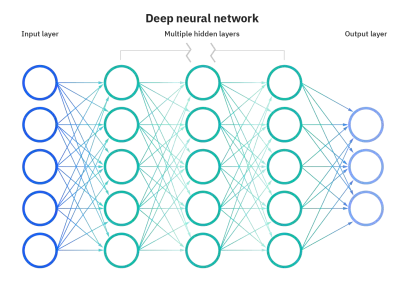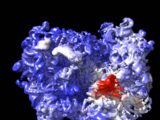
Difference between Artificial Intelligence, Machine Learning, Neural Networks, and Deep Learning in a Nutshell
July 27, 2021Table of Contents
How do artificial intelligence, machine learning, neural networks, and deep learning relate?
Artificial intelligence (AI), machine learning and deep learning are three terms often used interchangeably to describe software that behaves intelligently. However, it is useful to understand the key distinctions among them.
You can think of deep learning, machine learning and artificial intelligence as a set of Russian dolls nested within each other, beginning with the smallest and working out.

Machine learning is a subfield of artificial intelligence. Deep learning is a subfield of machine learning, and neural networks make up the backbone of deep learning algorithms. In fact, it is the number of node layers, or depth, of neural networks that distinguishes a single neural network from a deep learning algorithm, which must have more than three. In other words, all machine learning is AI, but not all AI is machine learning, and so forth.
ARTIFICAL INTELLIGENCE
John McCarthy, widely recognized as one of the godfathers of AI, defined it as “the science and engineering of making intelligent machines.”
Here are a few other definitions of artificial intelligence:
A branch of computer science dealing with the simulation of intelligent behavior in computers.
The capability of a machine to imitate intelligent human behavior.
A computer system able to perform tasks that normally require human intelligence, such as visual perception, speech recognition, decision-making, and translation between languages.
There are a lot of ways to simulate human intelligence, and some methods are more intelligent than others.
Finally, artificial intelligence (AI) is the broadest term used to classify machines that mimic human intelligence. It is used to predict, automate, and optimize tasks that humans have historically done, such as speech and facial recognition, decision making, and translation.
There are three main categories of AI:
Artificial Narrow Intelligence (ANI)
Artificial General Intelligence (AGI)
Artificial Super Intelligence (ASI)
AI can be a pile of if-then statements, or a complex statistical model mapping raw sensory data to symbolic categories. The if-then statements are simply rules explicitly programmed by a human hand. Taken together, these if-then statements are sometimes called rules engines, expert systems, knowledge graphs or symbolic AI. Collectively, these are known as Good, Old-Fashioned AI (GOFAI).
The intelligence that rules engines mimic could be that of an accountant with knowledge of the tax code, who takes information you feed it, runs the information through a set of static rules, and gives your the amount of taxes you owe as a result.
Usually, when a computer program designed by AI researchers actually succeeds at something – like winning at chess – many people say it’s “not really intelligent”, because the algorithm’s internals are well understood. The critics think intelligence must be something intangible, and exclusively human. A wag would say that true AI is whatever computers can’t do yet.
MACHINE LEARNING
What is machine learning?
In 1959, Arthur Samuel, one of the pioneers of machine learning, defined machine learning as a “field of study that gives computers the ability to learn without being explicitly programmed.” That is, machine-learning programs have not been explicitly entered into a computer, like the if-then statements above. Machine-learning programs, in a sense, adjust themselves in response to the data they’re exposed to (like a child that is born knowing nothing adjusts its understanding of the world in response to experience).
Machine learning is an application of AI that includes algorithms that parse data, learn from that data, and then apply what they’ve learned to make informed decisions.
An easy example of a machine learning algorithm is an on-demand music streaming service. For the service to make a decision about which new songs or artists to recommend to a listener, machine learning algorithms associate the listener’s preferences with other listeners who have a similar musical taste. This technique, which is often simply touted as AI, is used in many services that offer automated recommendations.
Machine learning fuels all sorts of automated tasks that span across multiple industries, from data security firms that hunt down malware to finance professionals who want alerts for favorable trades. The AI algorithms are programmed to constantly be learning in a way that simulates as a virtual personal assistant—something that they do quite well.
Machine learning involves a lot of complex math and coding that, at the end of the day, serves a mechanical function the same way a flashlight, a car, or a computer screen does. When we say something is capable of “machine learning”, it means it’s something that performs a function with the data given to it and gets progressively better over time. It’s like if you had a flashlight that turned on whenever you said “it’s dark,” so it would recognize different phrases containing the word “dark.”
Now, the way machines can learn new tricks gets really interesting (and exciting) when we start talking about deep learning and deep neural networks.
One aspect that separates machine learning from the knowledge graphs and expert systems is its ability to modify itself when exposed to more data; i.e. machine learning is dynamic and does not require human intervention to make certain changes. That makes it less brittle, and less reliant on human experts.
A computer program is said to learn from experience E with respect to some class of tasks T and performance measure P if its performance at tasks in T, as measured by P, improves with experience E. –Tom Mitchell
Types of machine learning algorithms
A machine learning algorithm can be divided into three categories:
Supervised machine learning
Unsupervised machine learning
Reinforcement machine learning
To learn more about Machine learning – Click here
NEURAL NETWORKS
What is a neural network?
Neural networks—and more specifically, artificial neural networks (ANNs)—mimic the human brain through a set of algorithms. At a basic level, a neural network is comprised of four main components: inputs, weights, a bias or threshold, and an output.
How is deep learning different from neural networks?
While it was implied within the explanation of neural networks, it’s worth noting more explicitly. The “deep” in deep learning is referring to the depth of layers in a neural network. A neural network that consists of more than three layers—which would be inclusive of the inputs and the output—can be considered a deep learning algorithm. This is generally represented using the following diagram:
Most deep neural networks are feed-forward, meaning they flow in one direction only from input to output. However, you can also train your model through backpropagation; that is, move in opposite direction from output to input. Backpropagation allows us to calculate and attribute the error associated with each neuron, allowing us to adjust and fit the algorithm appropriately.
DEEP LEARNING
What is deep learning?
Deep learning is a subfield of machine learning that structures algorithms in layers to create an “artificial neural network” that can learn and make intelligent decisions on its own.
The difference between deep learning and machine learning
In practical terms, deep learning is just a subset of machine learning. In fact, deep learning is machine learning and functions in a similar way (hence why the terms are sometimes loosely interchanged). However, its capabilities are different.
While basic machine learning models do become progressively better at whatever their function is, they still need some guidance. If an AI algorithm returns an inaccurate prediction, then an engineer has to step in and make adjustments. With a deep learning model, an algorithm can determine on its own if a prediction is accurate or not through its own neural network.
Let’s go back to the flashlight example: it could be programmed to turn on when it recognizes the audible cue of someone saying the word “dark”. As it continues learning, it might eventually turn on with any phrase containing that word. Now if the flashlight had a deep learning model, it could figure out that it should turn on with the cues “I can’t see” or “the light switch won’t work,” perhaps in tandem with a light sensor. A deep learning model is able to learn through its own method of computing—a technique that makes it seem like it has its own brain.

How does deep learning work?
A deep learning model is designed to continually analyze data with a logic structure similar to how a human would draw conclusions. To achieve this, deep learning applications use a layered structure of algorithms called an artificial neural network. The design of an artificial neural network is inspired by the biological neural network of the human brain, leading to a process of learning that’s far more capable than that of standard machine learning models.
It’s a tricky prospect to ensure that a deep learning model doesn’t draw incorrect conclusions—like other examples of AI, it requires lots of training to get the learning processes correct. But when it works as it’s intended to, functional deep learning is often received as a scientific marvel that many consider being the backbone of true artificial intelligence.
A great example of deep learning is Google’s AlphaGo. Google created a computer program with its own neural network that learned to play the abstract board game called Go, which is known for requiring sharp intellect and intuition. By playing against professional Go players, AlphaGo’s deep learning model learned how to play at a level never seen before in artificial intelligence, and did without being told when it should make a specific move (as a standard machine learning model would require). It caused quite a stir when AlphaGo defeated multiple world-renowned “masters” of the game—not only could a machine grasp the complex techniques and abstract aspects of the game, it was becoming one of the greatest players of it as well.
To recap the differences between the two:
Machine learning uses algorithms to parse data, learn from that data, and make informed decisions based on what it has learned
Deep learning structures algorithms in layers to create an “artificial neural network” that can learn and make intelligent decisions on its own
Deep learning is a subfield of machine learning. While both fall under the broad category of artificial intelligence, deep learning is what powers the most human-like artificial intelligence


